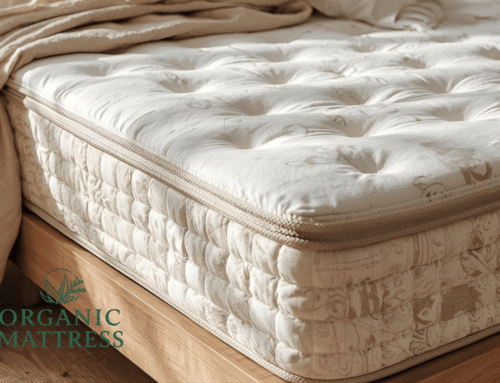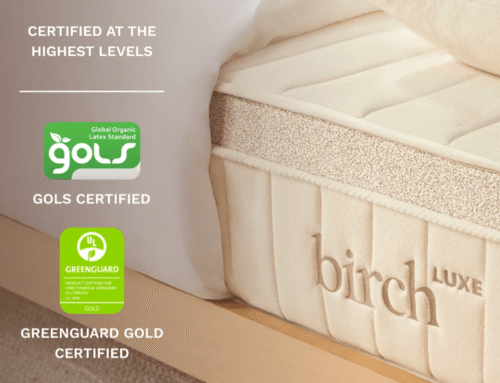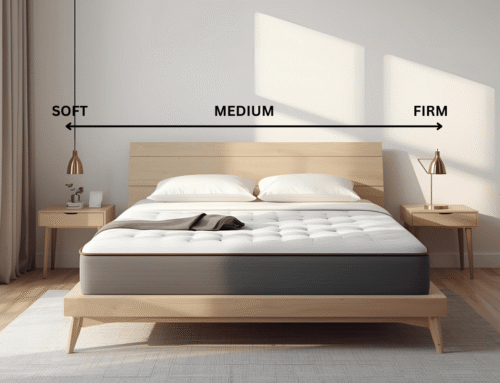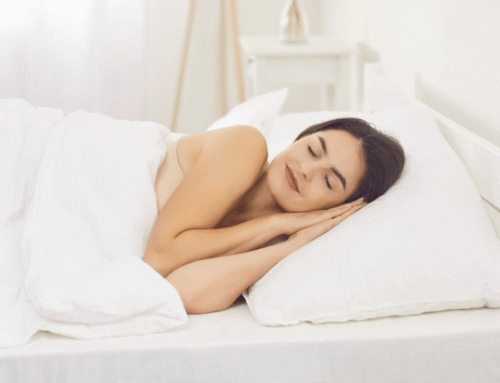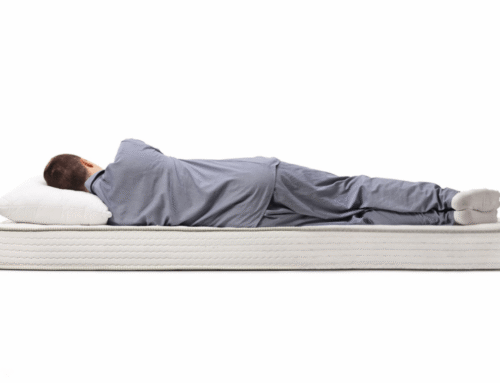When choosing a new mattress, hybrid and innerspring mattresses are common options. Hybrids combine coils and foam to offer support and pressure relief. On the other hand, innerspring mattresses have a firmer, more responsive feel because they use coils with thinner padding layers.
While some people prefer the bounce and breathability of innerspring mattresses that remain cooler throughout the night, many people look for hybrid mattresses for additional cushioning, particularly around the shoulders and hips. The choice between firmness and softness ultimately boils down to personal preference. And knowing which of these options is best for you is often the key to making a decision. Memory foam or an innerspring mattress?
To know which type best fits various sleeping styles, let’s examine the components, comfort levels, and durability of each type.
Key Takeaways
- Hybrid mattresses combine memory foam or latex with innerspring coils, providing plush comfort and responsive bounce in one supportive bed.
- Innerspring mattresses rely solely on coils with minimal padding, delivering firmer support and better airflow but offering less pressure relief.
- Hybrids are great if you want both soft and contouring foam and sturdy coil support that helps reduce motion transfer.
- Innerspring beds tend to cost less, sleep cooler, and feel more responsive, which is ideal if you prefer a firmer and traditional surface.
- Your sleep position is important. Hybrids usually suit side and combination sleepers, while innersprings support back and stomach sleepers more effectively.
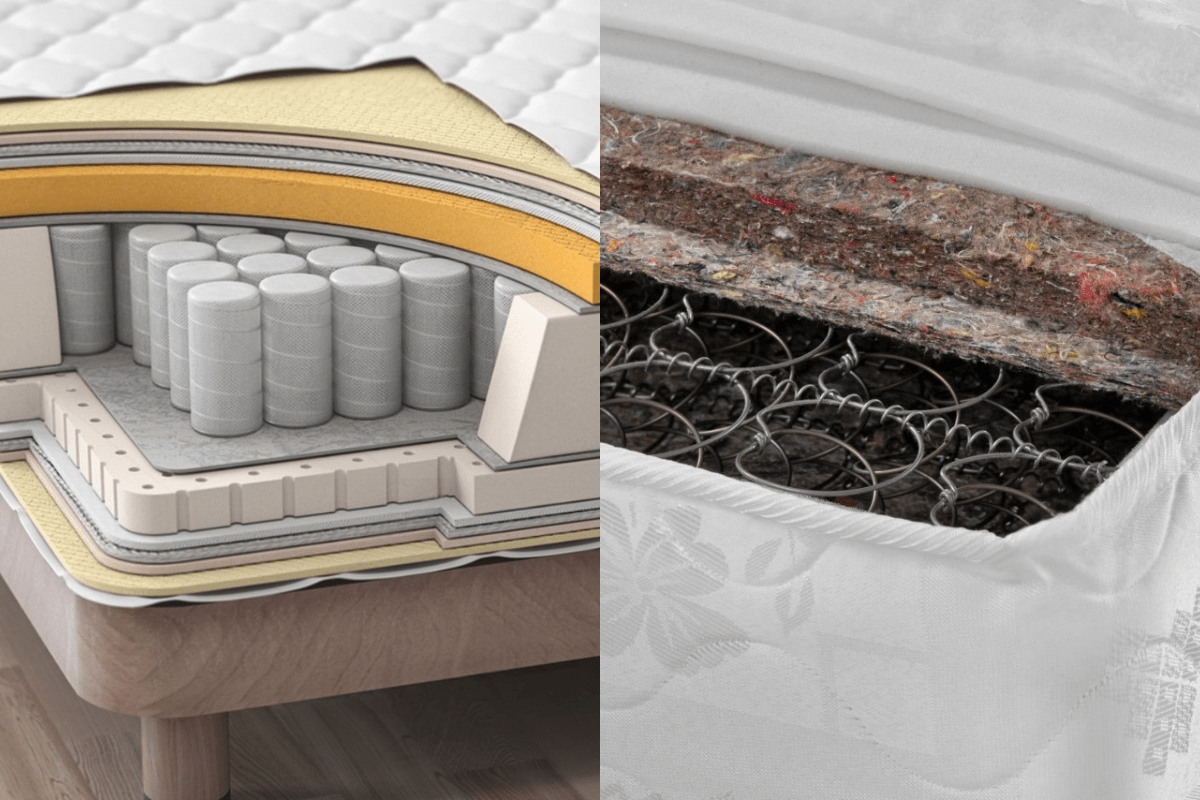
What Is A Hybrid Mattress?
A hybrid mattress blends different materials, usually combining a coil support system with layers of memory foam, latex, or polyfoam. The coils form the foundation, offering sturdy support, while the foam layers add softness and help ease pressure on the body. This combination aims to balance firmness with comfort. The coil base gives a responsive feel that keeps the mattress from sinking too much, and the foam layers contour to the body’s shape, which can help reduce aches in sensitive areas. This setup often appeals to those who want both durability and a bit of cushioning during sleep.
Hybrids tend to suit a wide range of sleepers because they offer a middle ground between traditional innerspring mattresses and all-foam models. The mix of materials can help with airflow, keeping the mattress cooler than memory foam alone, which many find helpful for staying comfortable through the night.
What Is An Innerspring Mattress?
Understanding the history and variations of innerspring mattresses helps clarify what sets them apart from other designs, including pocket coil mattresses, and highlights their classic construction and inventor’s contribution.
An innerspring mattress is one of the classic mattress designs, featuring a core built from metal coils or springs that offer the primary support. On top of these coils, there’s typically a thin layer of foam or fiberfill, though it tends to be less cushioned compared to the thicker comfort layers found in hybrid mattresses. These mattresses are often recognized for their firm, responsive feel and the bounce they provide. This kind of support appeals to people who like a more traditional sleeping surface without too much softness or contouring.
Innerspring mattresses usually come at a lower price point compared to many hybrids, which adds to their appeal. While they might not offer the same pressure relief as newer designs, their straightforward construction continues to attract those seeking reliable and budget-friendly options.
Benefits Of Hybrid Mattresses
- Pressure Relief: Foam layers on hybrid mattresses contour to the body and eases pressure around the shoulders and hips. This can help reduce discomfort for side sleepers or those who feel aches after waking up.
- Motion Isolation: The foam absorbs movement, minimizing disturbances caused by a partner shifting during the night. This feature often leads to more restful sleep in shared beds.
- Balanced Support: Combining coils and foam provides a mix of comfort and support. This balance tends to suit people dealing with back pain or those who prefer neither too firm nor too soft a mattress.

Benefits Of Innerspring Mattresses
Innerspring mattresses come with a lower price tag compared to hybrid models, which can be a big plus for those watching their budget. This affordability doesn’t necessarily mean a compromise on comfort, especially for people who prefer a firmer feel. The coil design gives these mattresses a lively and bouncy quality that helps with easy movement during the night. Getting up or shifting positions tends to feel smoother, which some sleepers really appreciate.
Due to having less foam, innerspring mattresses usually allow more air circulation and help keep the surface cooler throughout the night. This breathability can be especially helpful for those who tend to sleep hot or live in warmer climates.
Choosing the right innerspring mattress involves considering factors such as the number of coils and the overall weight of the mattress, which can affect support and ease of handling.
Materials Used In Hybrid Mattresses
Hybrid mattresses usually feature pocketed coils. These are individual springs that move separately and help the mattress adapt better to body shape and movement. This design tends to reduce motion transfer, so one person’s movements don’t disturb the other. It creates a balance between support and flexibility that many find comfortable.
Foam layers like memory foam or latex are often added on top of the coils to enhance comfort and relieve pressure points. Memory foam molds to the body, providing cushioning, while latex offers a bit more bounce and durability. These layers help soften the feel without sacrificing the support from the coils underneath.
Some hybrids include a quilted or pillow-top layer that adds an extra touch of softness and a plush feel. This top layer can improve initial comfort and make the mattress feel more inviting. Together, these materials offer a combination of support and comfort that appeals to a wide range of sleepers.
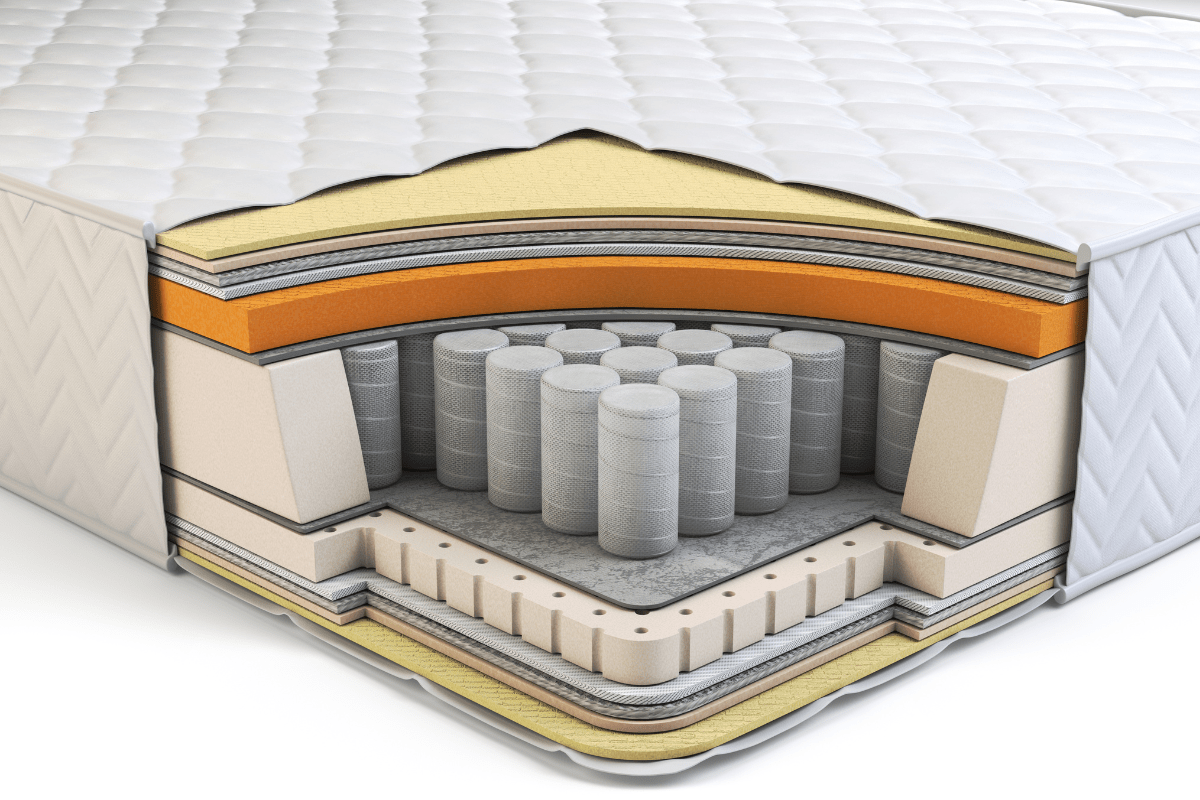
Materials Used In Innerspring Mattresses
Innerspring mattresses often rely on Bonnell or continuous coil systems, which deliver firm and reliable support. These traditional springs have been used for decades and tend to provide a stable foundation. The focus remains on structure rather than softness. The top layers usually include thin foam or fiberfill, quilted into the mattress surface to offer some light cushioning. This padding isn’t thick or luxurious but adds a bit of comfort without sacrificing the mattress’s supportive nature. It’s a simple approach that balances firmness with a touch of softness.
Covers typically consist of basic cotton or polyester fabrics, which are practical but not particularly breathable or luxurious. These materials emphasize durability and easy maintenance rather than high-end feel. Overall, innerspring mattresses prioritize support and longevity over plushness or advanced materials.
Which Is Best For You?
Which mattress suits someone best depends on their priorities and sleep habits. Hybrids have a mix of support and softness, which provides pressure relief while reducing motion transfer. This combination appeals to those who want comfort without sacrificing stability. Innerspring mattresses have a firmer and more responsive feel because of their coil systems. They serve people who prefer a bouncy sensation and consider budget important. These mattresses offer solid support, though they might not contour as much.
Sleep preferences and individual needs like back pain or overheating during the night guide the decision. Both mattress types have strengths. However, the best option depends on what matters most in comfort and support.
Durability And Longevity
Hybrid mattresses tend to hold up better over the years, especially those built with sturdy coils and dense foams. The mix of materials gives consistent support, even with everyday use. Some people notice they still feel well-supported after several years without sagging. In contrast, innerspring mattresses with thinner coils or less padding can feel worn much sooner. Springs might squeak or lose tension, which affects comfort. Others have mentioned dips in the middle or edges losing shape after a short time.
People who’ve owned both usually say hybrids feel more dependable in the long run. They don’t need flipping or rotating as often, and they stay in good shape with regular care. Longevity often depends on build quality, not just the type of mattress.
If you’re wondering how long an innerspring mattress lasts and how often you should turn or flip it to maintain its lifespan, these factors are essential to keep in mind for durability and comfort.
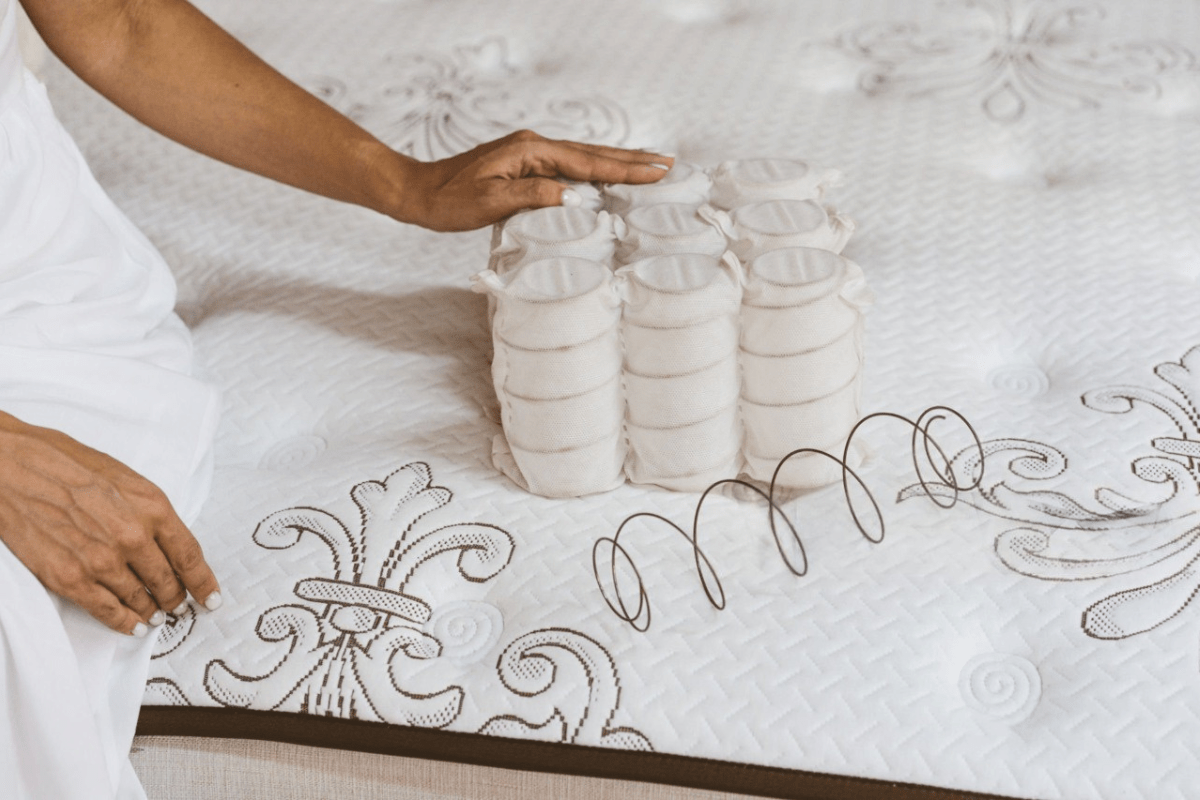
Price Considerations
Innerspring mattresses often cost less than other types, which is great for tighter budgets. They’re straightforward in design and usually don’t include the extra features that push prices up. However, some find the trade-off in comfort and support noticeable over time.
Hybrid mattresses tend to land in the middle to higher price ranges because of the mix of coils and foam or latex. The price often reflects better materials, and some people feel the comfort level is worth it in the long run. Those who’ve tried both usually say hybrids feel more supportive and adapt better to pressure points.
Spending more doesn’t always mean better sleep, but a few have said their hybrid held up better year after year. Others noticed their innerspring wore out quicker or lost support around the edges. Between both types, the added cost of a hybrid sometimes feels justified after a few months of regular use.
Final Thoughts
Hybrid mattresses combine foam or latex with coils, which give more cushion and pressure relief than innersprings. People who shift positions at night often prefer hybrids because they don’t feel every movement as much. There’s also less of that “springy” feel, which some find too distracting.
Innerspring mattresses rely on a coil system alone, so the surface tends to feel firmer and more responsive. There’s usually less padding, which can appeal to those who prefer a no-frills and classic mattress feel. Some report better airflow with innersprings, especially in warmer climates or homes without strong A/C.
Understanding the basic build of each mattress type can help narrow down options that match real sleep habits. A person who needs more back support may lean toward one with stronger coils, while someone who shifts positions at night might want a little more comfort on top. The decision often comes down to how the body feels in the morning.

